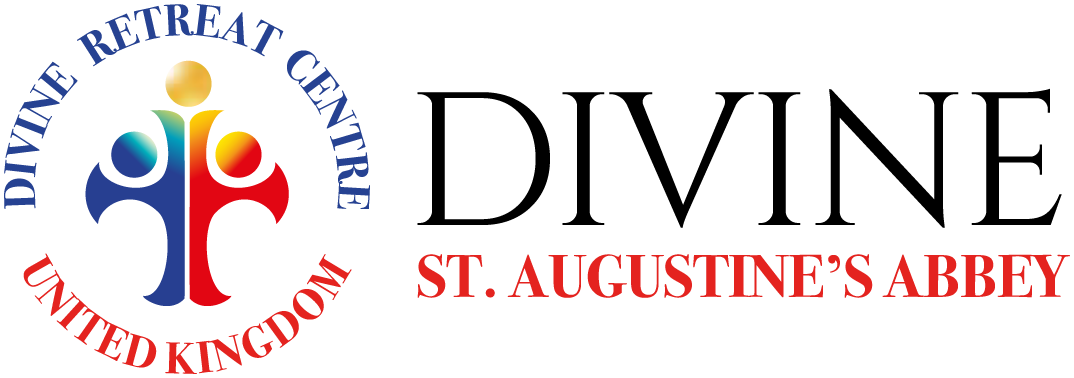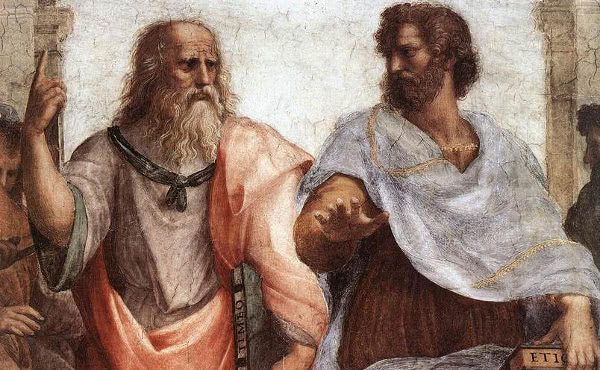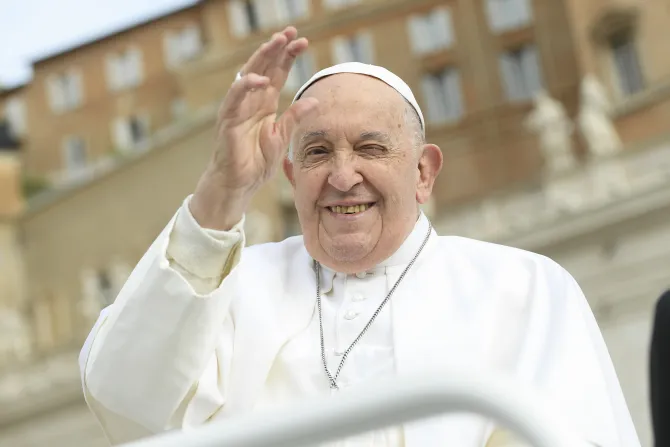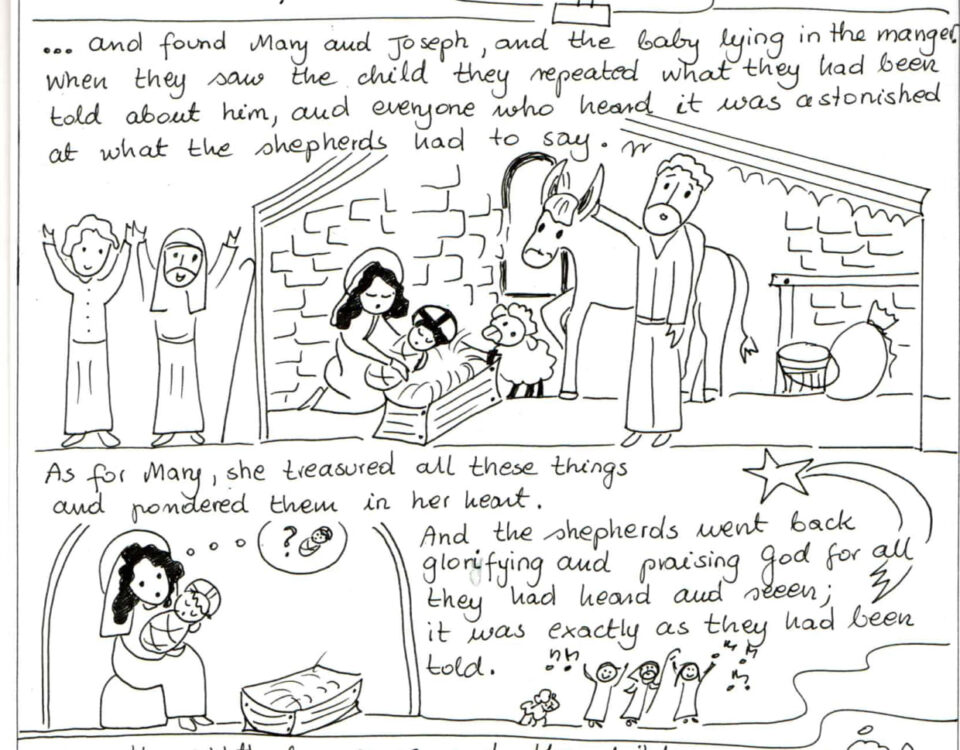Divine Retreat Centre UK – Official Website
Shadows of the Holy Eucharist — Blood Covenant
September 27, 2022Shadows of the Holy Eucharist — Manna
September 27, 2022What does it mean to be saved? For most people, it simply means being safe, being kept from harm or protected from a dire situation. It’s a valid definition, however, if we limit our understanding of being saved in this way, we may also limit our chances of being “truly” saved. “Therefore, we must pay greater attention to what we have heard, so that we do not drift away from it. For if the message declared through angels was valid, and every transgression or disobedience received a just penalty, how can we escape if we neglect so great a salvation?” (Hebrews 2:1-3). The message of salvation that is repeated all throughout the Scriptures and echoed by our Church—including the silent nudge from our own conscience—is a message we ought not to neglect.
In reality, the word “salvation” has a lot of depth, meaning, and history. It’s the main theme of the Scriptures, and it is also revealed to be at the very heart of the mission of Christ’s coming. “Indeed, God did not send the Son into the world to condemn the world, but in order that the world might be saved through him” (John 3:17). In Jesus’ own words, He said “I came not to judge the world, but to save the world” (John 12:47). It’s been more than 2,000 years since Jesus came into the world, but in what way did He show that He has done His work of saving us? Jesus saved us by offering a twofold sacrifice—the sacrifice on the cross and the sacrificial meal of the Passover.
By celebrating the sacrificial meal of the Passover as well as the sacrifice on the cross, Jesus had already fulfilled the scriptures. On top of that, this sacrifice is being made “present” in every altar where the “Holy Sacrifice of the Mass” or the “Holy Eucharist” is being celebrated. It is made “present” means that no matter how many Holy Masses are being celebrated, there will always be just One Sacrifice—the sacrifice on Mount Calvary and the sacrifice in the Last Supper. The priest, acting in the person of Christ, is bringing the one and the same sacrifice in the present through the intervention of the Holy Spirit. By the Holy Spirit’s indwelling presence, He transubstantiates the Bread and Wine into Jesus’ Body and Blood so that we are able to partake of the same sacrifice that Jesus performed 2,000 years ago. It’s all an act of God.
The New Passover that Jesus performed in the Last Supper (which He completed by dying on the cross) is already the finished ‘work of salvation’. There’s nothing more that can be added or subtracted from it. “When Christ had offered for all time a single sacrifice for sins, “he sat down at the right hand of God,” and since then has been waiting “until his enemies would be made a footstool for his feet.” For by a single offering, he has perfected for all time those who are sanctified” (Hebrews 10:12-14). It’s the perfect sacrifice. And it is by God’s will that we have been sanctified through the offering of the body of Jesus Christ once for all.
In order to understand the New Passover with greater depth, it’s important that we understand the Old Passover that foreshadowed it. That is, the Passover that represented the first great act of God’s deliverance for His people (the Israelites), which He performed through His chosen servant Moses—a shadow of Jesus Christ. In what way was the old Passover similar with the new? What makes the new Passover more superior than the old? Let’s find the answers to these questions so that we may also find the way to being saved.
1. The old Passover was set up in preparation for the people of Israel to be delivered from their slavery in Egypt; the new Passover was set up in preparation for the new people of Israel to be delivered from their slavery in sin-
In the Old Testament, the first great act of deliverance that God performed was the deliverance of the people of Israel from their slavery in Egypt. He sent 10 plagues to inflict the Egyptians, to convert and change them, and make them aware of the power of the one true and living God—the God of Israel. When the 9th plague was over and He was about to send the 10th plague, “The Lord said to Moses and Aaron in the land of Egypt: This month shall mark for you the beginning of months; it shall be the first month of the year for you” (Exodus 12:1-2). The Lord prepared Moses by communicating to Him the decisive event in their nation’s history, which was the day of their liberation. That was the first day of their Exodus—their escape from Egypt and journey toward the Promised Land. That day was the 15th day of Nisan, which is between March and April in the Gregorian calendar. That was the day when the Lord established the first Passover.
In the New Testament, Jesus instituted the New Passover in the Last Supper. “While they were eating, Jesus took a loaf of bread, and after blessing it he broke it, gave it to the disciples, and said, “Take, eat; this is my body.” Then he took a cup, and after giving thanks he gave it to them, saying, “Drink from it, all of you; for this is my blood of the covenant, which is poured out for many for the forgiveness of sins” (Matthew 26:26-28). To be delivered from our slavery to sin, Jesus instituted the New Passover (Holy Eucharist) where He offered His Body (bread) and Blood (wine) as true food and true drink for the forgiveness of our sins. In this Passover, we are being set free from sinful bondages and from the chains of Satan. This Passover is also the beginning of the New Exodus—our escape from the clutches of sin/evil and our journey towards the New Promised Land (that is, heaven).
2. The old Passover was established as a ritual of the whole congregation of Israel; the new Passover was established as a ritual or tradition of the Church-
In the Old Testament, Moses was instructed by God to “tell the whole congregation of Israel that on the tenth of this month they are to take a lamb for each family, a lamb for each household” (Exodus 12:3). The word “congregation” in its original translation is “ekklesia”, which means “church”. This is the first time when the word “church” appeared in the Bible and it was mentioned with reference to the Passover. Since then, it became a religious observance done in the Jewish Temple.
In the New Testament, Jesus gathered His twelve Apostles, representing the Church, to receive the “liturgy” of the New Passover. Through Jesus, they learned how to prepare it, how to celebrate it, etc. “On the first day of Unleavened Bread the disciples came to Jesus, saying, “Where do you want us to make the preparations for you to eat the Passover?” He said, “Go into the city to a certain man, and say to him, ‘The Teacher says, My time is near; I will keep the Passover at your house with my disciples.’” So, the disciples did as Jesus had directed them, and they prepared the Passover meal” (Matthew 26:17-19).
3. The old Passover involved the offering of a lamb; the new Passover involved the offering of a lamb-
In the Old Passover, the Lord instructed Moses to tell the people to, “take a lamb for each family, a lamb for each household. If a household is too small for a whole lamb, it shall join its closest neighbor in obtaining one; the lamb shall be divided in proportion to the number of people who eat of it. Your lamb shall be without blemish, a year-old male; you may take it from the sheep or from the goats” (Exodus 12:3-5).
In the New Passover, Jesus offered Himself as the sacrificial lamb. “The next day he saw Jesus coming toward him and declared, “Here is the Lamb of God who takes away the sin of the world!” (John 1:29). As the Lamb of God, Jesus was the perfect sacrifice. He is born without sin and remained sinless throughout His life and ministry. “We have a great high priest who has passed through the heavens, Jesus, the Son of God. For we do not have a high priest who is unable to sympathize with our weaknesses, but we have one who in every respect has been tested as we are, yet without sin” (Hebrews 4:14-15).
4. In the old Passover, the lamb was sacrificed; in the new Passover, the Lamb of God is sacrificed on the Cross-
In the Old Passover, the lamb had to be prepared to be sacrificed. “You shall keep it until the fourteenth day of this month; then the whole assembled congregation of Israel shall slaughter it at twilight. They shall take some of the blood and put it on the two doorposts and the lintel of the houses in which they eat it” (Exodus 12:6-7). The blood of the lamb must be applied on the two doorposts, which had a horizontal and vertical posts (making a cross). This is a clear foreshadowing of the crucifixion of the Paschal Lamb (Jesus).
In the New Passover, Jesus offered His Body (bread) and Blood (wine) as true food and true drink before His disciples in the Last Supper. “Jesus took a loaf of bread, and after blessing it he broke it, gave it to the disciples, and said, “Take, eat; this is my body.” Then he took a cup, and after giving thanks he gave it to them, saying, “Drink from it, all of you; for this is my blood of the covenant” (Mt 26:26-27). Jesus did not speak of the bread and wine as a symbolic representation of Himself but He spoke of them as “My body” and “My blood”. “Those who eat my flesh and drink my blood have eternal life, and I will raise them up on the last day; for my flesh is true food and my blood is true drink” (John 6:54-55). By offering His Body (bread) and Blood (wine) separately, Jesus was making a sacrifice and celebrating His death. On Mount Calvary, He completed the sacrifice by dying on the cross.
5. To complete the old Passover, the lamb must be eaten; to complete the new Passover, the Lamb of God must be eaten-
In the Old Passover, the people were instructed by God through Moses: “They shall eat the lamb that same night; they shall eat it roasted over the fire with unleavened bread and bitter herbs” (Exodus 12:8). To be saved, the lamb must be sacrificed, the blood must be sprinkled and the meat of the lamb must be eaten. They didn’t eat a symbolic lamb but a real lamb. It was only then that the Passover is complete; it was only then that the protection of God covered the people.
In the New Passover, Jesus offered Himself as the Lamb of God and the Bread of Life—not symbolically but as real food. “So Jesus said to them, “Very truly, I tell you, unless you eat the flesh of the Son of Man and drink his blood, you have no life in you. Those who eat my flesh and drink my blood have eternal life, and I will raise them up on the last day” (John 6:53-54). The promise of salvation only comes upon eating the Body and Blood of Christ in the Holy Eucharist. These words were very controversial among the Jews. “The Jews then disputed among themselves, saying, “How can this man give us his flesh to eat?” (John 6:52). “Because of this many of his disciples turned back and no longer went about with him” (John 6:66). They may have misunderstood it as cannibalism (eating of the flesh of the dead), which is wrong!
In the Holy Eucharist, we are eating the Living and Resurrected Body of our Lord and Savior Jesus Christ. Remember, Jesus’ Resurrected Body was able to get inside the locked room where the disciples were hiding. “When it was evening on that day, the first day of the week, and the doors of the house where the disciples had met were locked for fear of the Jews, Jesus came and stood among them and said, “Peace be with you” (John 20:19). Surely, Jesus can also come as Himself in the form of bread and wine, which He accomplishes in every altar every day through the indwelling presence of the Holy Spirit. With Jesus’ real presence within our very own body, how can sin prevail?
Conclusion
God’s greatest work of salvation is happening always in the Holy Eucharist. If we are already participating in it, then we can say we are “on our way” to being saved. In the Holy Eucharist, we are given Jesus Christ himself in bread and wine as the “foretaste” of eternity. So, when Jesus said, “Do this in remembrance of Me,” we are being invited to keep the Lord’s Passover daily, without fail. It is we who need to be saved—not God. It is our duty, therefore, to respond to God’s message of salvation. It’s a message being echoed by the Church and presented at the altar of the Lord’s Passover, where our little piece of heaven awaits us.
…………………………
Reference for the Article:
Bible study on Exodus Chapter 12 Part 1 from https://www.youtube.com/watch?v=Lni2OXwlRM8&list=PLdUg2nqlAsmVVOf8YilBBBik8Iy4uHJ5z&index=14
Bible study on Exodus Chapter 12 Part 2 from https://www.youtube.com/watch?v=APcnUjqermM&list=PLdUg2nqlAsmVVOf8YilBBBik8Iy4uHJ5z&index=14



